School Stories at EDUtech

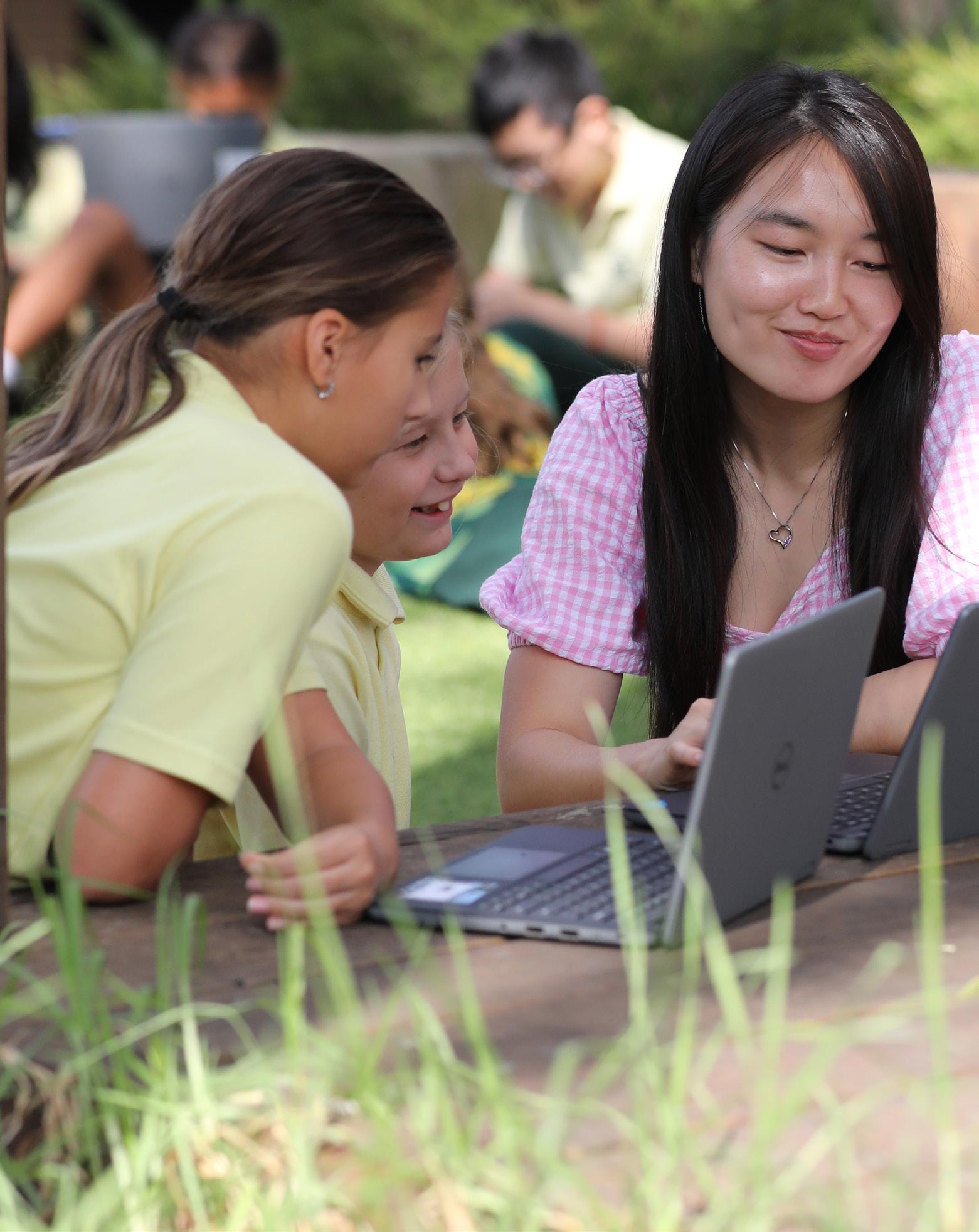







In this issue, we dive into the inspiring stories of schools presenting with us at EDUtech—schools that are using technology in truly transformative ways. From boosting community engagement and streamlining operations to crafting rich, multimodal learning experiences and building powerful STEM skills, these schools are leading the way!
Each school has generously opened their doors to share their journey—all with the goal of helping others learn from their experiences. In today’s everevolving technological landscape, our growth comes from sharing what works, learning from one another, and embracing technology together.
A huge THANK YOU to the amazing schools featured in this edition for their enthusiasm and commitment to showcasing the opportunities technology brings to our students.
We’d love to hear how you are using technology in innovative ways at your school. Get ready to be inspired!
Linda Lazenby Director – Technology Enablement, Schools and Skills
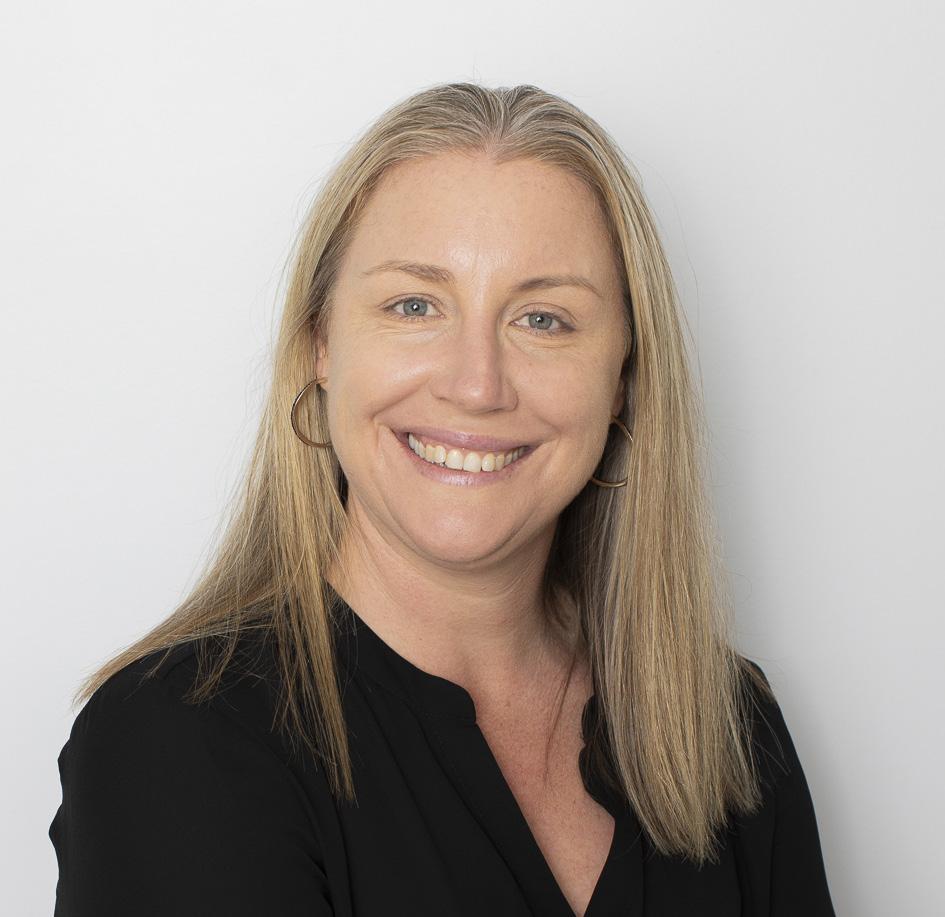
A huge thank you to all of the staff and students who represented the NSW DoE at EDUtech 2025. An equal thanks to all who have contributed content and photos to enable this magazine to be created. It is a pleasure sharing your school stories!

We acknowledge the lands of the Gadigal people of the Eora nation where this magazine was created and acknowledge all lands that are represented in each school story presented.

DIRECTOR

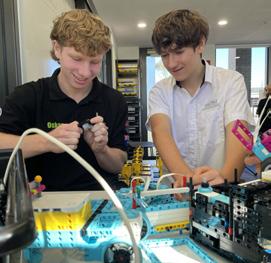



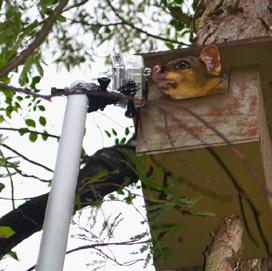


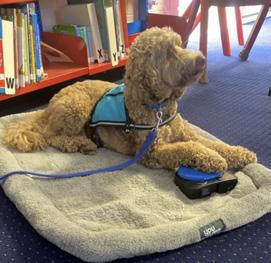
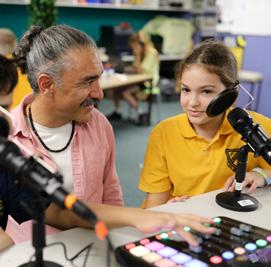




Tell us about some of the engaging learning tasks in your classroom.
Teaching our students relatable skills for the future of our workforce is not just something talked about, it’s put into action at Tempe HS! Meet Ben Jones, Head Teacher, TAS leading the way.
Meet Ben!
I’ve always been passionate about technology. In high school, I was one of the few students with a home computer and internet access. Just for fun, I built a website for my dad’s business—and within months, it drew unexpected demand. Although I started out teaching Physical Education, I always found myself drawn back to working with technology.
My passion lies in using technology to enrich students’ learning experiences and develop their skills, opening pathways to further education in technology and engineering.


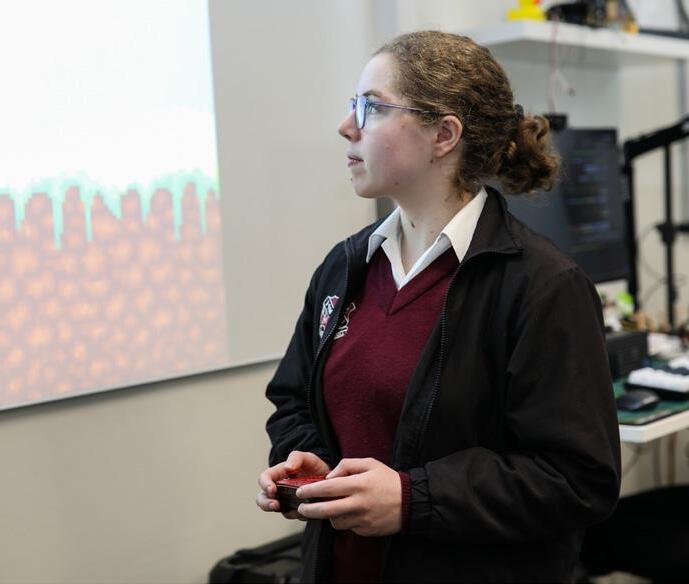
In Computer Technology, Games for Change focuses on students becoming engineers by designing to industry standards using the Unity IDE. They then test their development on an Xbox, adding realworld relevance. In Software Engineering, Software Automation, students wrangle data, engineer features, and design and train machine learning models to create functional solutions. My personal favourite is Biomedical Mechatronics, where students learn C++ for microcontrollers and gain hands-on mechatronic skills. They’re assigned a patient with a biomedical need and follow an engineering process to prototype a custom mechatronic device tailored to that need.
What key skills are you seeing students develop?
While we have a large cohort skilled in programming, CAD, CAM, and design thinking, the most valuable trait emerging is their interdisciplinary ability. Students are combining software engineering with design thinking and CAD/CAM to create unique projects across all TAS courses amplifying both engagement and outcomes.
Have you seen students develop skills and identify potential career pathways through these programs?
Tempe High School attracts aspirational students, many already interested in careers in technology or design. Through our unique, cross-disciplinary programs, we give students hands-on experience with real-world applications. By Year 12, those who once said they “liked design” or “liked technology” now have a clear direction, whether it’s Media Production, Industrial Design, Software or Data Engineering, or Biomedical Engineering, supported by a professional portfolio showcasing their projects, from 3D designs to GitHub code.
Size 1470 students
Network Hastings
Context Rural High School
What do baked pickles and award-winning robotics have in common? Meet the student robotics club at Hastings Secondary College, where innovation and creativity are driving their success!
How did Hastings Secondary College (HSC) first start engaging in robotics?
Hastings Secondary College began its robotics journey in 2017 by joining the FIRST Robotics Competition, forming a team to give students hands-on STEM experiences through designing, building, and programming robots. Aimed at engaging rural and disadvantaged students in STEM, the program thrives with support from the STEM Industry School Partnerships (SISP), dedicated teachers, industry partners, and the wider community.
What have been some of the key highlights and positive impacts the robotics program has had on students?
Since launching the robotics club at Hastings Secondary College, we’ve seen remarkable growth in and beyond the classroom. What began as a spark for STEM interest has evolved into a transformative experience for many students.
Academically, students gain hands-on skills, while also developing teamwork, communication, leadership, and resilience. Students build confidence and learn to turn ideas into real-world solutions.
Students who never considered futures in science or technology are now pursuing university pathways, apprenticeships, and industry placements. The robotics team has proudly represented the school across many local, state, and worldwide events.
However, the greatest success is seeing students discover their potential. These programs don’t just teach robotics, they empower and ignite a passion for learning that lasts well beyond school.

What’s your advice for new teachers?
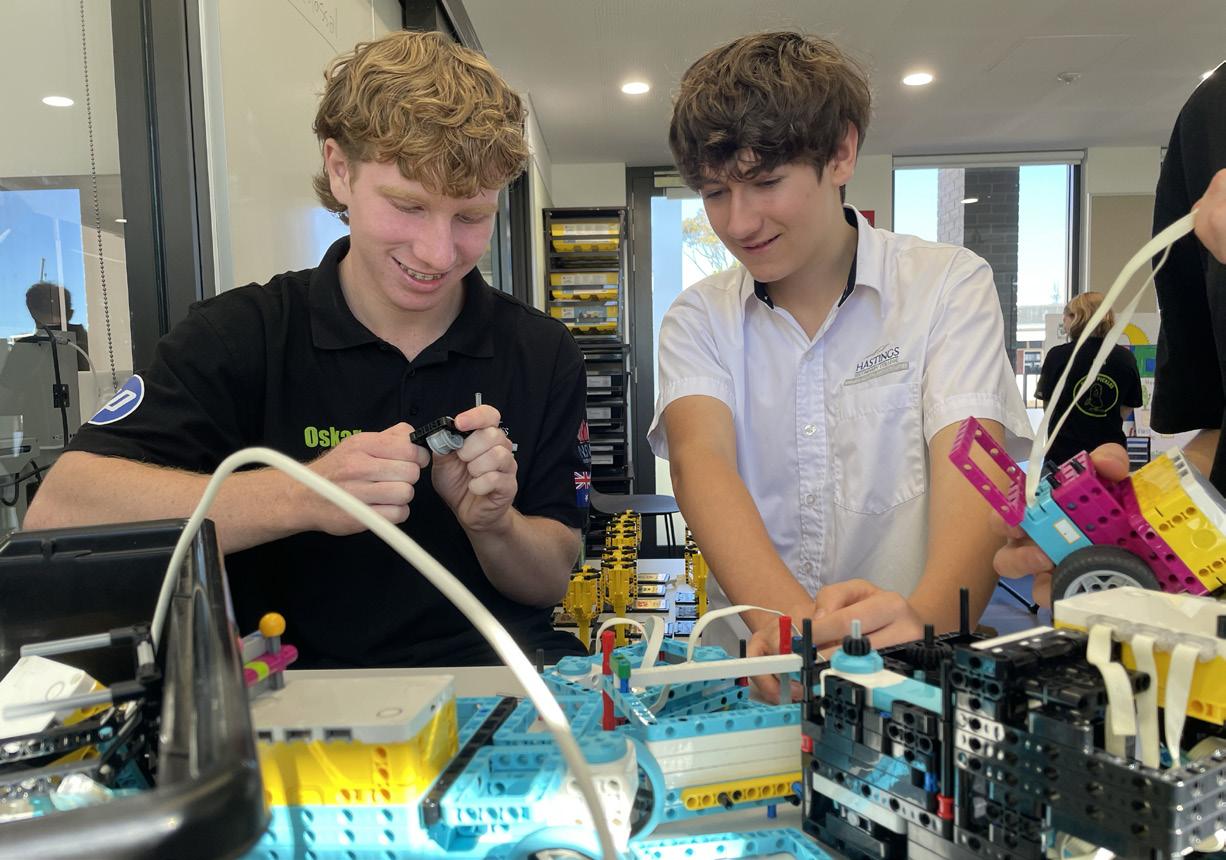
A common myth about school robotics is that teachers need to be coding or engineering experts, but they don’t. At Hastings Secondary College, passionate educators simply learn alongside their students. Robotics thrives on collaboration, curiosity, and a willingness to start small. Free resources, training, and support from programs like SISP make it easier than ever to get started. Some of the most powerful moments happen when teachers and students solve problems together. You don’t need all the answers, just the confidence to take that first step.
Size 98 students
Network Auburn
Context ED/BD SSP
Learn about Verona School’s unique context and how innovative design tools have been put into action to create school wide digital platforms and resources.
Tell us a little bit about Verona School.
Why did the school feel the need to refresh their processes and why was Canva the right tool for this?
Verona School faced the challenge of updating our Personalised Learning Plans (PLP). Feedback from teachers and stakeholders revealed that the previous template was cumbersome, timeconsuming, and difficult to navigate.
After consultation and setting clear goals, we chose Canva to modernise the PLP process. It allowed us to maintain accessibility and efficiency while aligning with our school’s values and identity.
Canva’s features enabled us to create visually engaging documents, streamline workflows, foster collaboration, and present student information in a more professional and userfriendly manner.

Verona School is a School for Specific Purposes (SSP), and we formally cater for students with emotional disturbances and behavioural disorders. Our main school site supports students whose mental health symptoms are more external in nature, while our smaller Verona House campus caters for students whose mental health concerns present more internally.
We are working hard to move away from the perception that we are a “behaviour school” and aim to promote understanding that all our students experience significant mental health and social challenges, which must be addressed for them to achieve academically.

How have teachers and the community responded to these?
Teacher feedback has been overwhelmingly positive, with many noting that creating PLPs is now quicker and easier compared to an older, more static-style document. Collaboration amongst staff has also significantly improved.
Parents, carers, and students have shared similar praise, finding the document visually appealing, easy to read, and, most importantly, faster and simpler to update during PLP meetings.
What advice do you have for other schools looking to innovate in similar ways?

Canva can feel a little overwhelming at first and we recommend connecting with the Digital Support Team and Professional Learning available to schools to grasp the basics. While Canva is not the only tool available for creating, it has been the platform that allowed us to develop a user-friendly, visually appealing PLP template that is consistent with our school branding.
Size 368 students
Network Shoalhaven
Context Rural Primary School
Podcasting has taken off as an innovative medium to share, discuss and engage audiences, and teachers like Mitchell Riley from Shellharbour PS are leading the way!
As a teacher, what interested you in podcasting and its use in the classroom?
Podcasting offers students a powerful outlet for self-expression beyond traditional writing. It supports high-potential learners creatively, academically, and socially by providing a meaningful platform to extend their skills and deepen understanding. It is also an effective way to enhance school community connections!
What does podcasting look like in your classroom?
As STEM Coordinator, I facilitate Shellharbour Public School’s podcasting program. Each teacher nominated two students to participate. Students began by learning core podcasting skills— scriptwriting, role delegation, and collaborative planning, before producing the first episode of the Shellharbour Podcast. They now create episodes independently with minimal support. The program fosters technical and teamwork skills while providing a powerful platform for student voice and self-expression.
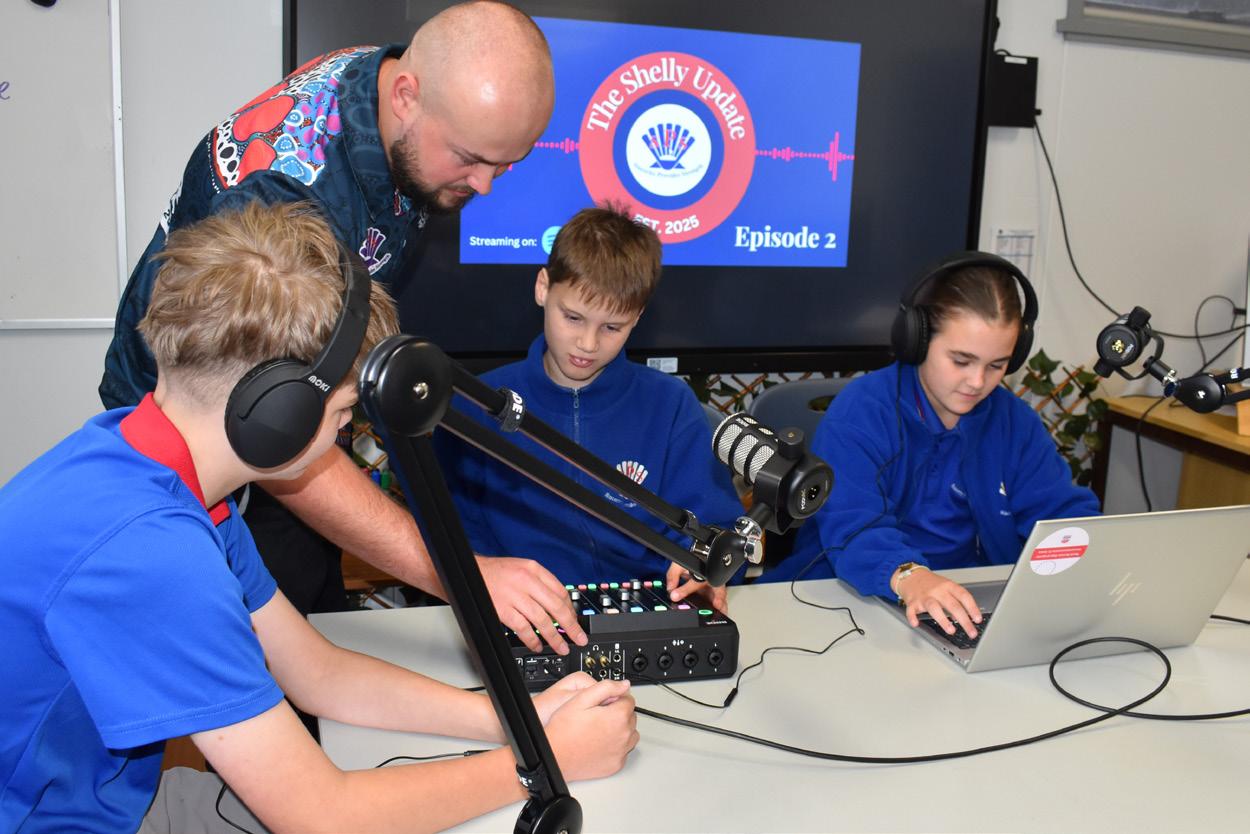
How are you sharing what students create?
The podcast is published on Spotify, allowing both our school community and the wider public to access it. Knowing their work reaches a real audience motivates students to consistently produce high-quality episodes every fortnight.

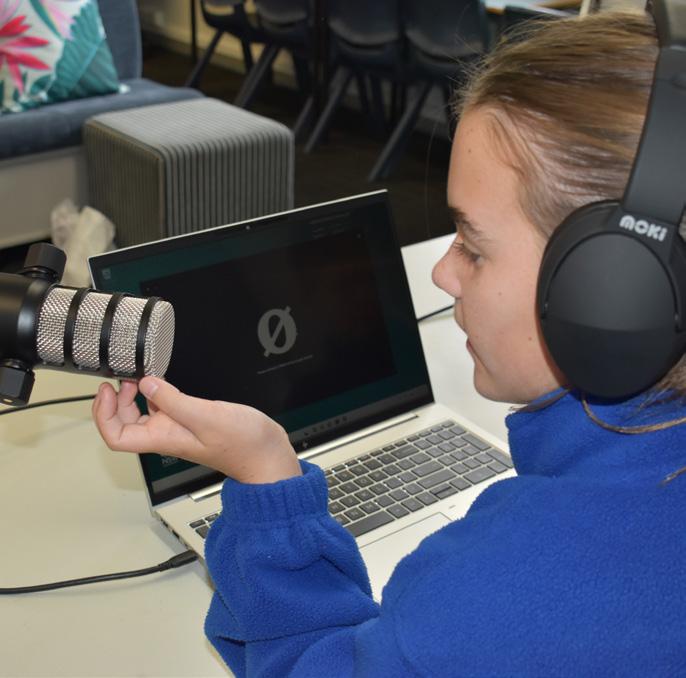
What are your best tips for getting an engaging podcasting project off the ground?
Teachers don’t need deep podcasting knowledge to begin. The T4L team has made it easy for anyone to launch a school podcast, offering excellent support and resources like video tutorials, script templates, and lesson plans.
To create engaging content, make the most of T4L tools, collaborate with colleagues, and embrace creativity. Teachers are often keen to showcase what’s happening in their schools, tap into their expertise to enrich your podcast.
Most importantly, trust your students. With support and room to learn from mistakes, they can produce outstanding, meaningful work.
Size 280 Students
Network Shoalhaven
Context Rural Primary School
Learn how Berry Public School uses their Tech Club to engage students and create an inclusive learning environment for all!
When it comes to STEM and Technology, what are some of the goals Berry PS are working towards?
Our technology and STEM programs aim to give every student a chance to shine. Through initiatives like Tech Club and enrichment programs, students build skills in technology, problem-solving, and creativity. We also support staff to grow in confidence with tech. From highpotential learners to those with additional needs, all students are supported. For many, Tech Club offers not just learning, but a safe, inclusive space to belong.
What kinds of activities are offered in Tech Club and what skills are students developing?
Tech Club is a hands-on space where students explore, create, and collaborate using a wide variety of digital tools. From Ozobots, VR kits, and green screen filmmaking to Scratch, Minecraft Education, and podcasting, students develop creativity, problem-solving, teamwork, and tech skills in a fun, inclusive environment.

As a teacher, what are your favourite STEM tools to use?
Ozobots were a fantastic introductory tool, accessible to most students and a great starting point for staff new to coding. They offered a hands-on way to explore the basics in a fun and engaging way.
One of my favourite Tech Club programs is CoSpaces. It was a huge hit with Stage 3, with 50 students attending each session that term. The platform catered to a wide range of interests, from coding games and creating immersive environments to storytelling and animation.
What advice do you have for other teachers?
Ultimately you don’t need to be an expert. Part of the learning process is figuring out problems together!
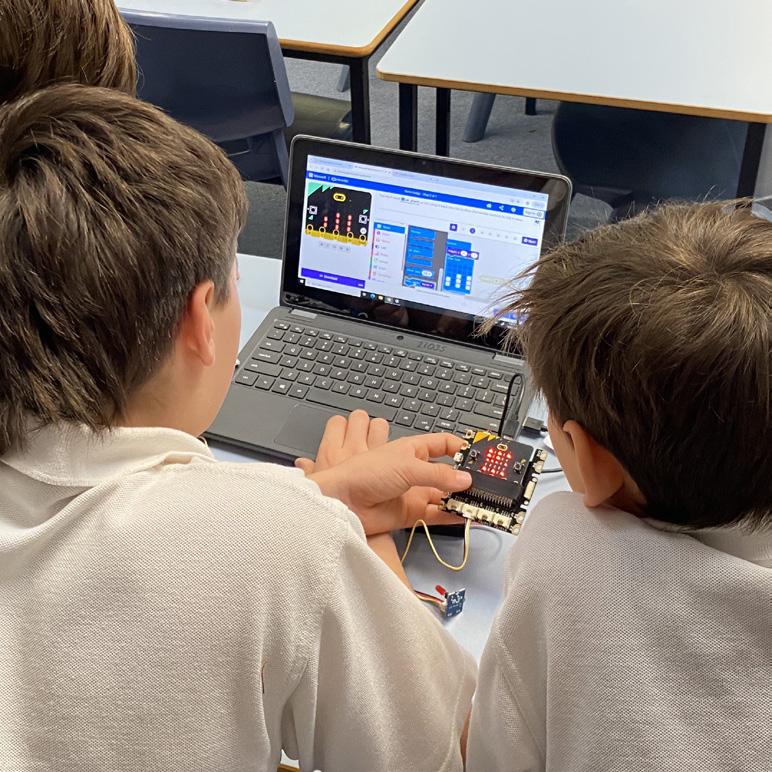


Size (1 Principal 1 Teacher – no enrolments)
Network Windsor
Context Environmental Education Centre (EEC)
Read all about Brewongle EEC –where technology tracks the wild!
Tell us a little bit about the uniqueness of Brewongle EEC.
We are set on five acres of bushland overlooking Dyarrubin, the Hawkesbury River, as a former school site before becoming an EEC in the early 1980s. We host K–12 schools for day visits, incursions, and camp programs. Our focus is on curriculum-aligned excursions, with Aboriginal Cultural Education for both students and teachers as a key priority. Each year, we welcome around 11,000 students.
What are some of the challenges that Brewongle faces when it comes to integrating technology?
Most of our lessons are outside and involve fieldwork. Our challenge is often around connectivity in the bush. We want the technology to add to the experience for students and not distract or take away connections to nature.



What are some of the awesome ways Brewongle has integrated technology?
One method we use to observe birdlife is through a ‘Tree Trough’—an arboreal water source that draws in birds and other wildlife. A remote wildlife camera trap records activity, allowing students to view and analyse the footage. Technology transforms the Tree Trough into an engaging learning tool. Our custom Google Site supports these lessons with structured pre- and post-excursion activities.
What advice do you have for other teachers or other EECs?
When technology is used to support learning in meaningful, relevant ways, student engagement naturally grows. Pair that with outdoor learning in nature, and you have a powerful recipe for engaging learners of all ages!
Size
430 Students
Network St Andrews
Context Metropolitan Primary

For over 10 years, robotics and innovation has been embedded in Ingleburn Public School’s school culture creating a legacy that continues to thrive.
How did Ingleburn Public School (IPS) first start engaging in robotics?
As a Universal Design for Learning school, we’re guided by inclusive, flexible approaches to teaching and are always looking to innovate. With access to cutting-edge tools like 3D printers, Spheros, VR kits, Microbits and a passionate team, starting a robotics club was a natural next step. For the past decade, we’ve been dedicated to nurturing student talent and creating opportunities to showcase their tech skills in an ever-evolving digital world.

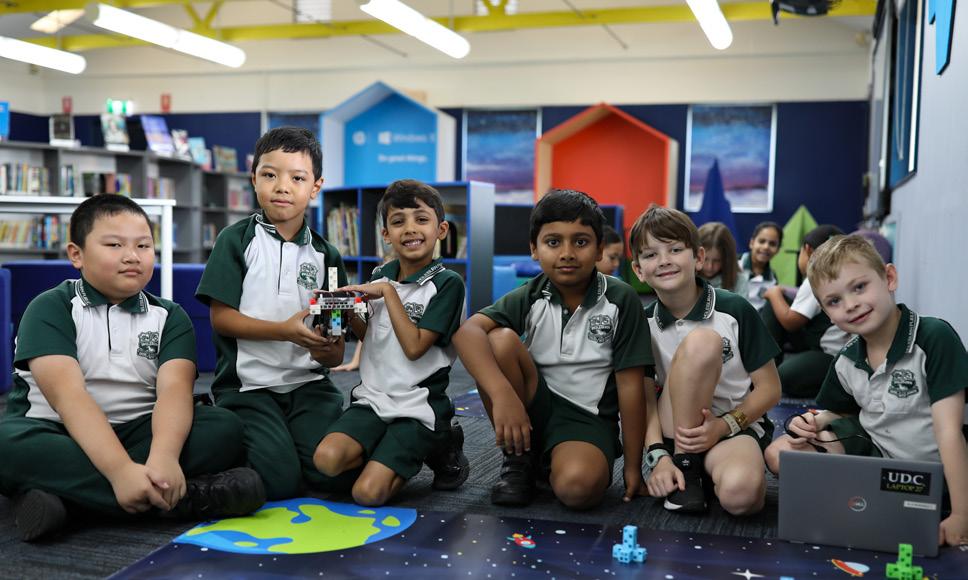
What success have you seen from the implementation of the robotics club at school?
We began with just primary students, but as interest grew and robotics became embedded across classes using support and release time, we then expanded into K-2, creating a natural feeder program.
For the past five years, our school has consistently placed at the National Finals of the Universal Robotics Challenge (URC). Last year, our students reached the international stage, qualifying to represent Australia at the URC World Finals in Japan.
In 2024, our team made history becoming the first Australian team to ever place, proudly taking out 3rd place!
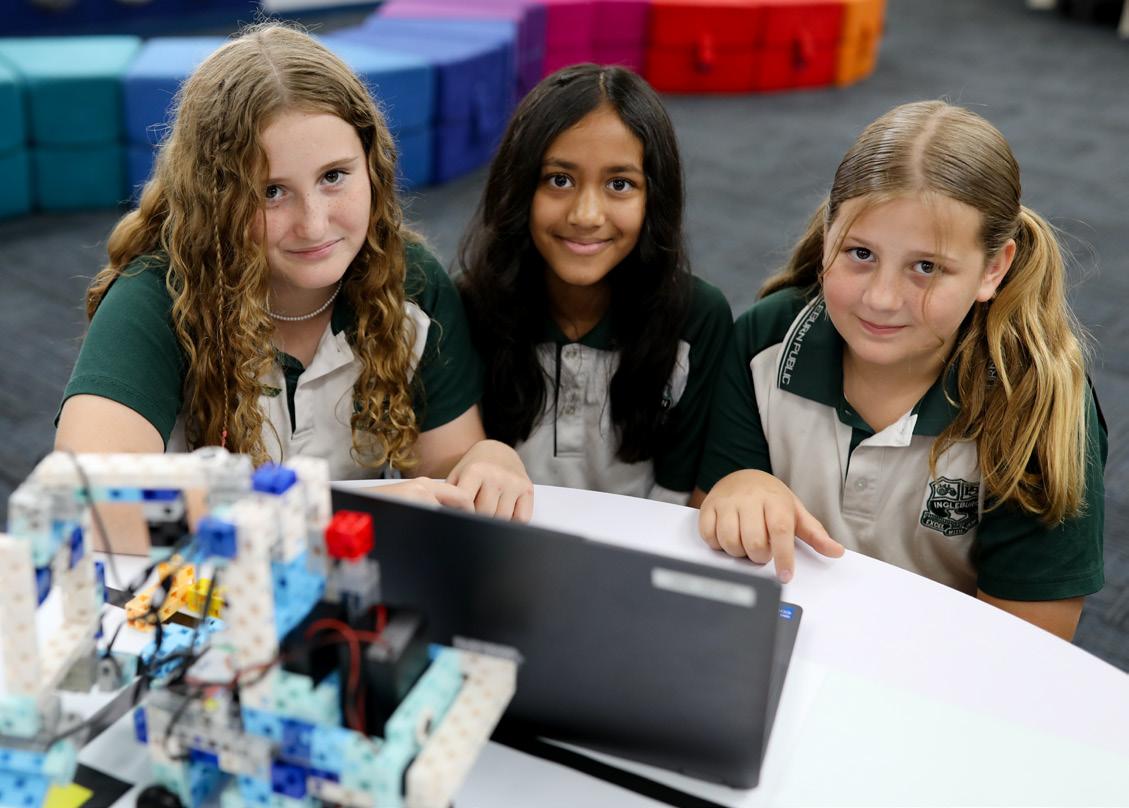
What advice do you have for other teachers and schools?
Robotics and coding can be a lot simpler than they seem. We offer professional learning for staff to show how coding skills can be developed through unplugged activities, linking to subjects and syllabus like mathematics and then extending to all Key Learning Areas. Many students already have the skills needed to excel in robotics, they just need the opportunity and support to thrive.
in STEM
Size 1462 students
Network Maitland
Context Technology High School (Metro)
The Women in STEM program at Rutherford Tech HS has been truly life changing for women who are enabled to reach their full potential in and beyond school.
Tell us a little bit about the technology and STEM initiatives aimed at females at RTHS.
At Rutherford Technology High, the Women in STEM Program pairs 80 mentors with 98 Year 5–6 girls for hands-on workshops like soldering and 3D printing, with 90% gaining STEM confidence. Senior students hone entrepreneurial and innovation skills by crafting business cases, pitching to investors and collaborating on ambitious projects like our upcoming hydrogen-powered car. An annual Industry Brunch connects them with 30 female leaders, opening doors to real-world opportunities and future STEM careers.
These experiences transform every girl into a confident innovator, entrepreneur and future STEM leader.
What impact are you seeing on girls across the school?
Since the Women in STEM program began, female enrolment in STEM courses has risen from 13 to 90, driving a cultural shift across the school. Participants speak up more, solve complex problems, and inspire peers. More girls are choosing advanced STEM subjects, with senior students leading projects, mentoring, and showing younger students that STEM is a space where they belong.
Although our first cohort has not yet graduated, we already see senior participants stepping into career-like roles: many complete multi-week work-shadowing placements and internships.

How can other schools develop similar programs to encourage more girls in STEM and technology?

Start with challenges that matter locally, whether they are environmental, health or mobility problems to make STEM feel purposeful. Formalise partnerships with industry and universities so mentors and site visits bring authenticity into classrooms. Build in quick feedback loops and weekly confidence surveys to iterate your program and demonstrate impact to stakeholders. Prioritise representation by recruiting under-represented students and connecting them with relatable role models.
Size 70 students
Network Pittwater
Context Metro SSP (Including DE)
‘Inclusion isn’t a destination, it’s a mindset and with the right tools, every student not only belongs, they thrive.’
Tell us a little bit about the uniqueness of Sir Eric Woodward SSP.
Sir Eric Woodward School is a School for Specific Purposes that supports students K-12 with mild, moderate and severe physical and intellectual disabilities and other complex learning needs including behaviour and health care needs. Students are placed into our face-to-face classes or Distance Education Support Unit (DESU), enrolling students from across NSW. The school offers a tailored curriculum that emphasises individual learning outcomes and personal development, ensuring that each student receives the support necessary to thrive.
How can assistive and inclusive technology support students to thrive?
Innovative, assistive and inclusive technology doesn’t just enhance learning it transforms lives. Educators and therapists collaborate to integrate digital tools that support each student’s learning, communication, and sensory needs. These tools enhance, rather than replace, personal interaction, giving students a voice, a way to express themselves, and greater autonomy.
For non-verbal learners, eye gaze technology is transformative. All students, whether they be in classrooms or via DESU have access to a program called Grid 3 to communicate, express needs and engage with peers and teachers through the day.

At Sir Eric Woodward, technology supports inclusive, personalised learning across all areas:
• Adaptive Devices like iPads and laptops cater to individual needs and promote independence.
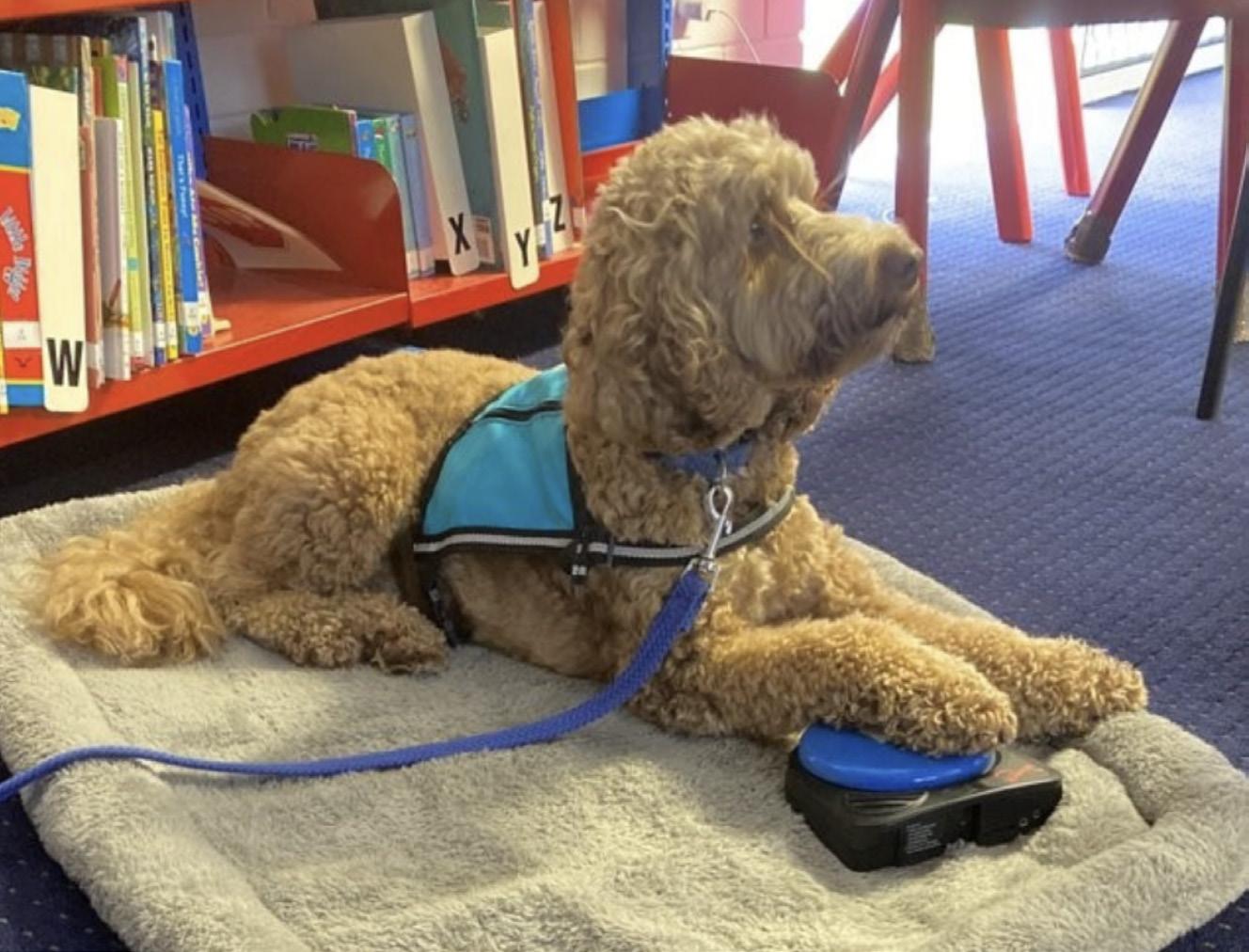
• AAC Tools give non-verbal students a voice and enable full classroom participation.
• Interactive Whiteboards deliver engaging, visual lessons tailored to diverse learners.
• Sensory Tech includes sensory rooms and CVI-friendly spaces that aid focus and regulation.
• Assistive Tools like speech-to-text and screen readers help students with physical disabilities access the curriculum.
• Virtual Platforms support distance education, enabling flexible, collaborative learning.
Size 327 students
Network Sutherland
Context Metro Primary

Kirrawee PS have used the medium of podcasting to create connection between students and their local elderly community, creating intergenerational memories.
As a teacher, what interested you in podcasting and its use in the classroom?
As a keen podcast listener, I’ve learnt a lot about topics and interesting people. Through listening, one can see how podcasting is also a creative method for storytelling, as it allows people to come together and share their stories. Part of my role as the Makespace teacher is to always try new things. So, what better way to connect our students to our community than through this modern-day art of storytelling!
Tell us a little bit about your current podcasting project.
Students at our school created a podcast-style interview series by connecting with residents at a local retirement home. The project involved learning interview techniques, practising with peers, and using stem.T4L equipment to record and edit conversations. Students developed communication and digital storytelling skills, while residents shared their life stories. It was such a beautiful scene seeing the two demographics come together. With the inquisitive nature of youth and the caring, nurturing elderly guiding their interviewer along, it was simply education at its best! The finished podcasts have been shared on the school’s YouTube channel and serve as a lasting memory for the residents and their families.

This project has developed great community engagement, why is this important and what impact is this having?
The project gave students a rare chance to connect with older community members, fostering a sense of belonging and mutual respect. Many residents also cherished the opportunity to engage with the younger generation, something they don’t often experience.
This initiative reflects Kirrawee Public School’s strong community focus, and we look forward to continuing projects like this in the future.
What advice do you have for teachers starting podcasting in their classroom?
Give the project time and keep it simple! Audio is everything! Make sure students test their audio recording first. The most effective recording equipment was simply an iPad, an audio splitter, and two lapel microphones. Did I mention that audio is everything?
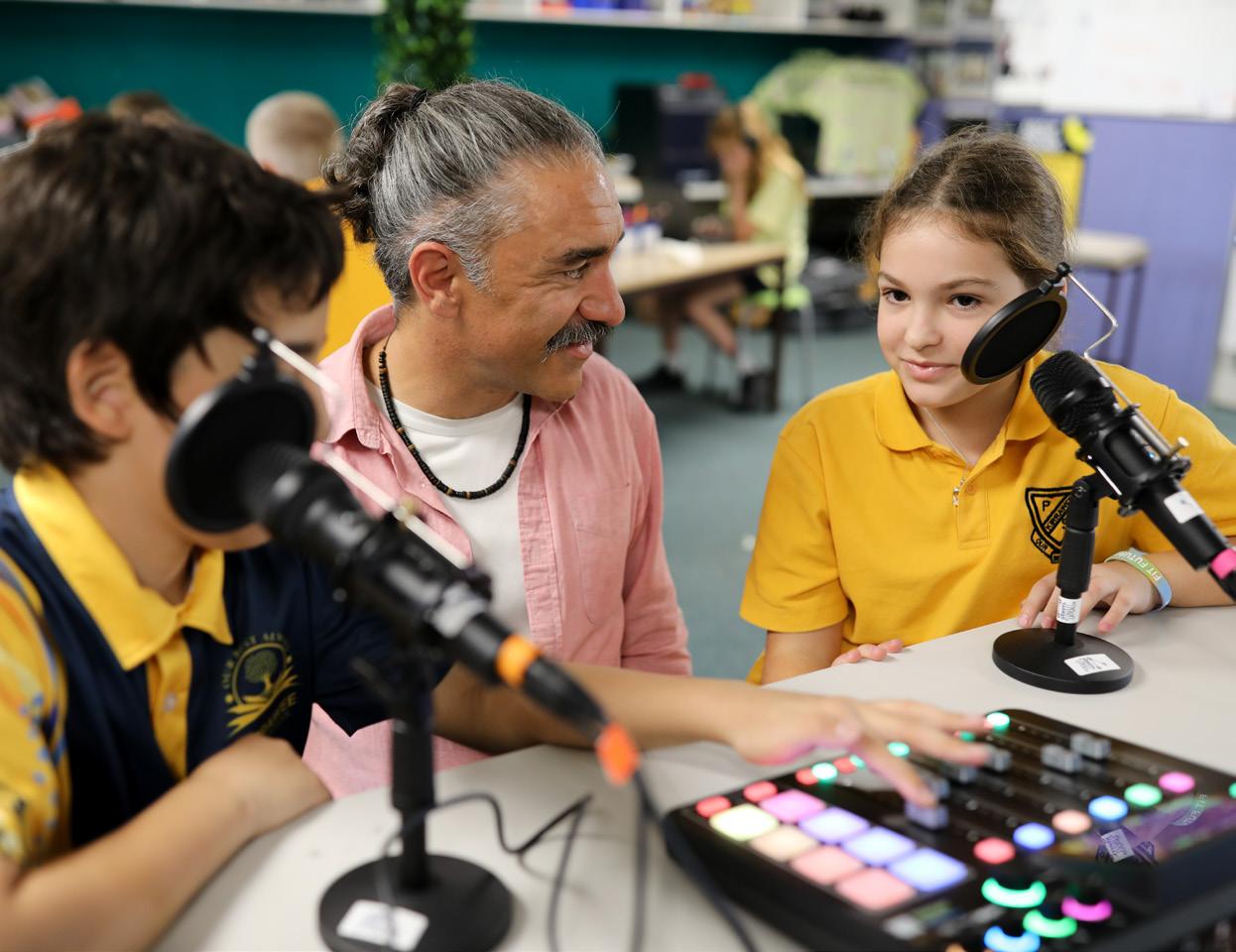
Size 268
Network Georges River
Context Metropolitan Primary
Learn how Lugarno PS leverage STEM Tools to empower students in an authentic, project driven enrichment program.
Tell us about Lugarno Public School’s goals when it comes to technology.
At our school, we use technology across K- 6 as a tool to support learning and help students build digital skills and responsible digital citizenship. Our goal is to ensure students have equitable access to technology and meaningful opportunities to enhance their learning.

How are you using technology to support HPGE students?
We aim to identify students who show interest and potential by providing regular opportunities to participate in enrichment programs and technology clubs. Across our projects, gifted and high potential students demonstrate a high level of engagement and strong commitment to their work. As teachers we see these students build critical and creative thinking, problem-solving, resilience, as well as demonstrated leadership and effective teamwork, to reach the best outcomes.
What were the pieces of impact for you as teachers supporting this learning?
For this collaborative project, students researched, planned, designed, and built their own amusement park ride using the Lego Spike Prime kit and coding skills. By hosting a showcase presentation at the end of the program, students had the opportunity to share their work with an authentic audience. Their high level of engagement and commitment was evident and showcasing their work helped foster a sense of pride and accomplishment while strengthening connections between students, their families, and the broader community.

What advice do you have for other teachers looking to engage HPGE students?
We strongly encourage other schools to use the stem.T4L kits and DoE resources to support enrichment programs. They come with a resource library that can support teachers, as well as the opportunity to tap into support from a Digital Learning Advisor. We have plans to facilitate enrichment programs in Semester 2 using the Podcasting and Aeroponic kits.
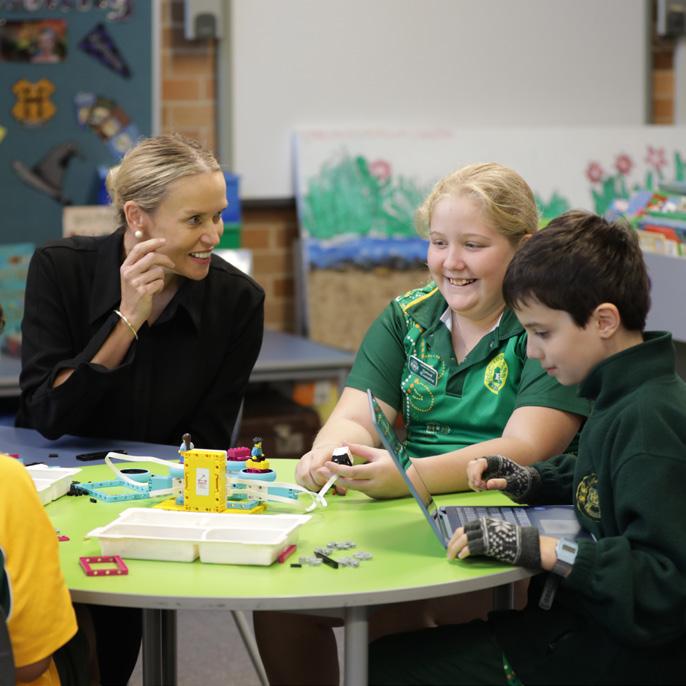

The Technology 4 Learning (T4L) team operates out of the NSW Department of Education’s Information Technology Directorate (ITD), Technology Enablement division.
Bringing together a diverse group of educators, ICT professionals, and innovation specialists, the team is dedicated to equipping teachers, students, and schools with expert guidance and a range of support strategies to facilitate impactful professional development growth and enhance digital learning across a multitude of areas.
The T4L website is a great place to start to learn more about our team, access resources and get further support no matter where you or your school may be on their digital journey.
“Enhance your browsing experience by signing in and syncing your browser profile. This feature allows you to effortlessly access your favourite bookmarks and tab groups, ensuring they’re available no matter where you are or what device you’re using. Just sign in, and everything you need will be at your fingertips!”
“I love being able to use my mobile device to scan documents or upload pictures straight to the cloud! The Google Drive and Microsoft OneDrive apps make this task super easy!”

“I love using Canva’s presentation tools to keep my audience engaged. Embedding videos, music, and interactive elements makes every session dynamic, fun, and perfectly suited to digital-age learners.”
“Ctrl+V shortcut! Think of it as your personal clipboard powerhouse! It’s your history of everything you’ve copied, letting you store, pin, and instantly retrieve text and images whenever inspiration strikes or tasks demand. It’s truly a game-changer for your workflow!”

edu.nsw.link/T4L-Website
edu.nsw.link/t4l-community
NSWEduChat is a secure, department-owned generative artificial intelligence (AI) tool ensuring security, privacy and equity while offering tailored content for the NSW Education environment.
The tool aims to provide additional support to staff in developing and delivering teaching experiences, easing workload demands, and empowering users to advance their AI skills in a safe environment.
Find out how NSW DoE staff can access EduChat and how it is being used as a tool to support schools.
The stem.T4L project provides trial kits, resources, professional learning and support to all schools across NSW Education. The stem.T4L project empowers schools to teach students the skills they need to solve the problems of tomorrow.




“Microbits are a fantastic stem.T4L tool that empowers students to explore coding, electronics, and problemsolving through hands-on, creative projects. Use the Microbit’s built-in sensors—like the accelerometer and temperature sensor—to create real-world data experiments that connect coding with science and maths concepts.”








“My favourite tool is the LEGO Spike Prime kit! It simplifies engineering design for teachers with easy tutorials. Once students grasp the basics, they can tackle openended tasks, showcasing their incredible creativity, innovation, and problem-solving skills. It’s truly inspiring to see!”

